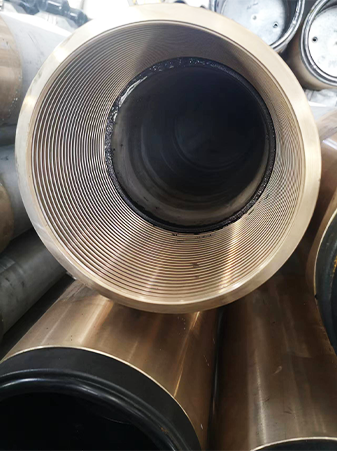- Afrikaans
- Albanian
- Amharic
- Arabic
- Armenian
- Azerbaijani
- Basque
- Belarusian
- Bengali
- Bosnian
- Bulgarian
- Catalan
- Cebuano
- Corsican
- Croatian
- Czech
- Danish
- Dutch
- English
- Esperanto
- Estonian
- Finnish
- French
- Frisian
- Galician
- Georgian
- German
- Greek
- Gujarati
- Haitian Creole
- hausa
- hawaiian
- Hebrew
- Hindi
- Miao
- Hungarian
- Icelandic
- igbo
- Indonesian
- irish
- Italian
- Japanese
- Javanese
- Kannada
- kazakh
- Khmer
- Rwandese
- Korean
- Kurdish
- Kyrgyz
- Lao
- Latin
- Latvian
- Lithuanian
- Luxembourgish
- Macedonian
- Malgashi
- Malay
- Malayalam
- Maltese
- Maori
- Marathi
- Mongolian
- Myanmar
- Nepali
- Norwegian
- Norwegian
- Occitan
- Pashto
- Persian
- Polish
- Portuguese
- Punjabi
- Romanian
- Russian
- Samoan
- Scottish Gaelic
- Serbian
- Sesotho
- Shona
- Sindhi
- Sinhala
- Slovak
- Slovenian
- Somali
- Spanish
- Sundanese
- Swahili
- Swedish
- Tagalog
- Tajik
- Tamil
- Tatar
- Telugu
- Thai
- Turkish
- Turkmen
- Ukrainian
- Urdu
- Uighur
- Uzbek
- Vietnamese
- Welsh
- Bantu
- Yiddish
- Yoruba
- Zulu
Understanding Pup Joint Tubing and Its Role in Oil and Gas Operations
Understanding the Complexity of Pup Joint Tubing in Oil and Gas Operations
In the oil and gas industry, the efficiency and reliability of drilling operations are paramount for successful extraction. One essential component that plays a significant role in these operations is pup joint tubing. Though often overlooked in discussions about drilling equipment, pup joints are crucial for ensuring that the complex systems of pipes work seamlessly together. This article delves into the nature of pup joint tubing, its applications, and why it is a critical element in the industry.
What is Pup Joint Tubing?
Pup joints are essentially short lengths of tubular goods that are used to connect various components of the drill string and production tubing. These joints typically range from 2 to 6 feet in length and are available in various diameters and grades, depending on the specific requirements of the operation. Made from high-strength materials like steel, pup joints ensure that the integrity of the tubing system is maintained under high-pressure and corrosive environments.
Applications of Pup Joint Tubing
Pup joints serve multiple essential functions in oil and gas operations
1. Length Adjustment One of the primary uses of pup joints is to adjust the length of the tubing string. In scenarios where the exact length of tubing required cannot be met with standard lengths, pup joints offer the flexibility to fine-tune the assembly to the necessary specifications. This is crucial for both drilling and completion operations, ensuring that the equipment operates efficiently.
2. Pressure and Stress Management In high-pressure environments, managing the stress on the tubing is critical. Pup joints can help distribute pressure and alleviate stress points, thereby reducing the risk of failures or leaks that could lead to hazardous situations or significant operational downtime.
pup joint tubing

3. Facilitating Connections Pup joints are often employed to facilitate connections between different sections of tubing or to connect the tubing to other components, such as valves and fittings. Their standard lengths simplify the process of making secure and reliable connections, thereby enhancing the overall functionality of the system.
4. Enhancing Stability By providing additional connections and support, pup joints contribute to the overall stability of the tubing string. This stability is vital for both drilling operations and for the later stages of production, where consistent performance is imperative.
Importance in the Oil and Gas Industry
The significance of pup joint tubing in oil and gas operations cannot be overstated. First and foremost, they enhance operational efficiency. In large-scale drilling projects, minimizing downtime is crucial to controlling costs and maximizing production. By allowing for quick adjustments and easy connections, pup joints enable faster setup and modifications as needed.
Moreover, safety is a primary concern in the oil and gas sector. The use of pup joints minimizes the potential for joint failure due to improper lengths, therefore reducing the risk of spills and accidents. Such incidents can have devastating environmental impacts and result in substantial financial penalties and operational delays.
Finally, as the industry moves towards more complex drilling techniques, such as deepwater drilling and unconventional resource extraction, the demand for versatile components like pup joints will only grow. Their adaptability allows them to be tailored to meet the evolving challenges faced by operators in various environments.
Conclusion
Pup joint tubing may be a small component within the vast ecosystem of oil and gas drilling operations, but its role is undeniably significant. By facilitating length adjustments, managing pressure, enabling stable connections, and enhancing overall safety, pup joints contribute to the successful execution of drilling projects. As the industry continues to evolve, so too will the innovations surrounding pup joint tubing, ensuring they remain a relevant and indispensable part of the oil and gas landscape. Understanding and appropriately utilizing these components will help operators maintain efficiency, safety, and productivity in a demanding and competitive sector.
-
Tubing Pup Joints: Essential Components for Oil and Gas OperationsNewsJul.10,2025
-
Pup Joints: Essential Components for Reliable Drilling OperationsNewsJul.10,2025
-
Pipe Couplings: Connecting Your World EfficientlyNewsJul.10,2025
-
Mastering Oilfield Operations with Quality Tubing and CasingNewsJul.10,2025
-
High-Quality Casing Couplings for Every NeedNewsJul.10,2025
-
Boost Your Drilling Efficiency with Premium Crossover Tools & Seating NipplesNewsJul.10,2025







